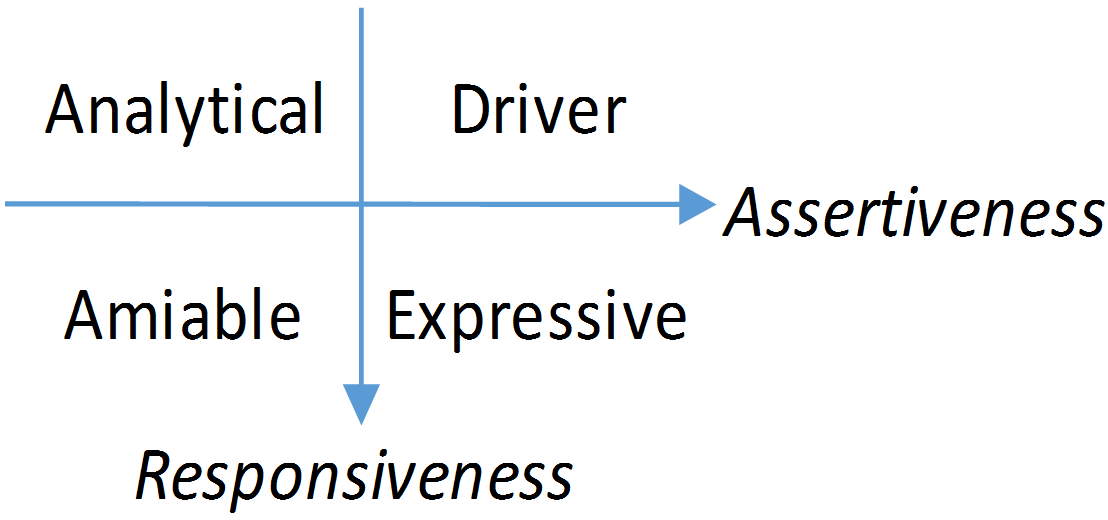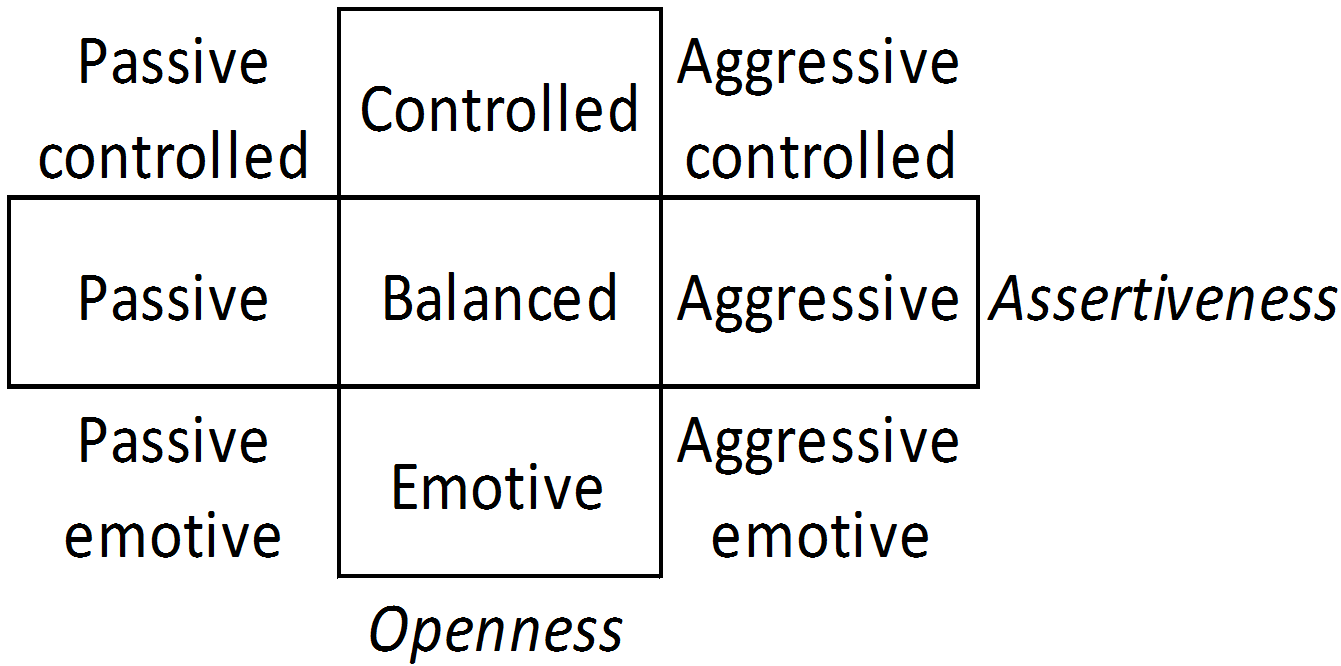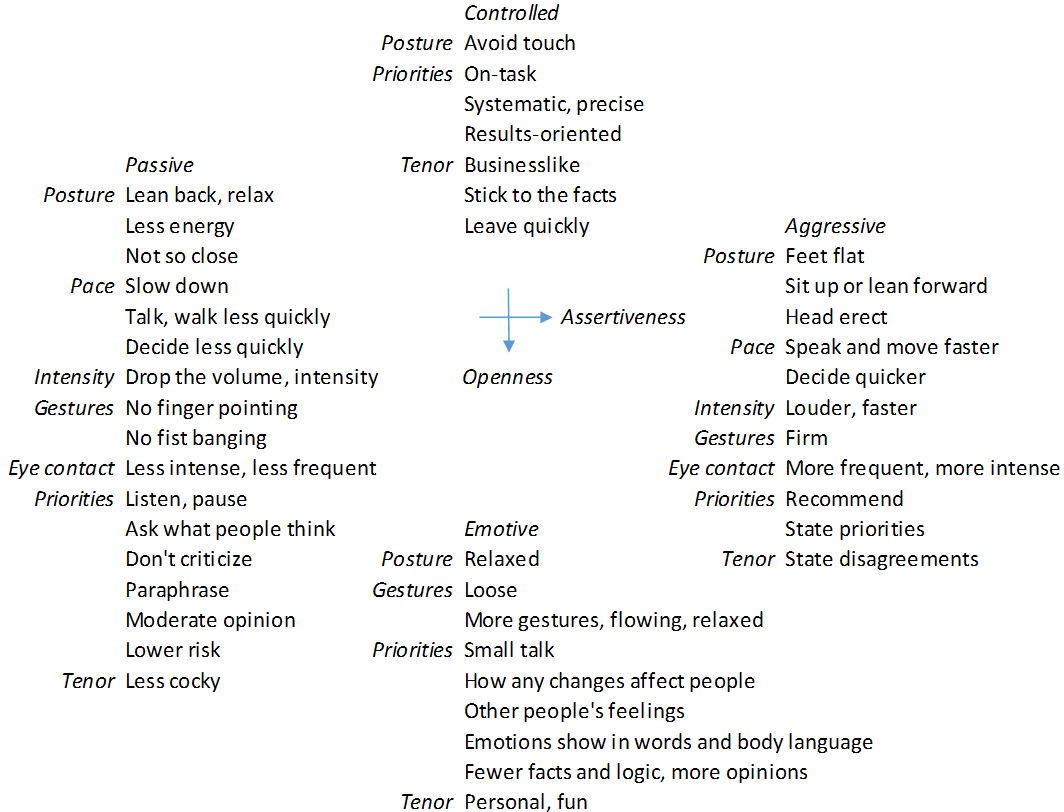 [1]
[1]
Reflective listening is easier when you factor in social styles
The Social Styles Profile, an adjective checklist that shows how people consistently describe others, was developed using factor analysis. Originally, our factor analysis had shown us five clusters or scales: 1) assertiveness; 2) versatility; 3) responsiveness; 4) aloofness; and 5) easygoing.
For the assertiveness scale, a very high odd-even reliability of 0.93 was found. The versatility scale had a reliability of 0.91. In testing the responsiveness and aloofness scales, we found some overlap of adjectives; thus, we combined these two scales, with a resulting reliability of 0.70. The easygoing scale did not have enough reliability to be statistically meaningful, and it was dropped.
…our research group investigated the question of whether one rater’s evaluation of a subject correlates with that of two other raters… The results were that assertiveness and responsiveness showed a significant positive correlation among raters; versatility was also positively correlated among raters, but the correlation was not as strong…
…because it appears that the versatility score, unlike the other two, has some positive and negative connotations to it—more endorsement versus less endorsement—we chose to keep it separate from the other two scales. Numerous studies have proved our contention that assertiveness and responsiveness are not a measure of success or endorsement, but that versatility is.
After the raw scores had been tallied, the scales were divided into fourths, so that 25 percent of the population was in each quartile.
Successful, well-regarded career persons were found along all ranges of the assertiveness and responsiveness scales—just as were less successful individuals.

Social styles labels [2]
Reflective listening using social styles in turn means focusing on observables

Observables labels
Assertiveness is a valid observable. Assertiveness values run along a well-understood continuum of passive—assertive—aggressive.
Openness conveys that what’s observed is how much a person holds his emotions closed-in or out in the open. Openness values run along a continuum of controlled—balanced—emotive.
Looking ahead, observing will be simpler if you can focus on the strongest variation in assertiveness or openness. Also, getting in sync will be simpler if you can benefit from the existing balance in your social style.
The assertive style can be learned. Start out balanced, and you can flex with less effort, or you can flex further and sync up better.
Balanced openness may never become second nature. But you can recognize which openness style feels like home to you, and be better prepared to flex here to sync up better.
The closing section provides direct guidance on how to use social styles observation and social styles sync for active listening:
- When you’re observing someone, what are characteristic combinations of their observable actions?
What do you see? - When you’re then syncing up to communicate better with him, what are characteristic combinations of your sync actions?
What do you do?
Reflective listening requires watching the observables, and getting in sync
Your objective in communication is not merely to express yourself. Your aim is to get your idea across to somebody else.
Style flex provides a way of communicating on the other person’s wavelength without losing your own integrity (the substance of what you say stays the same), or your naturalness (most of your behaviors will be your typical ways of relating).

Observable/sync actions
Note:
An employer has no business with a man’s personality. Employment is a specific contract calling for specific performance, and for nothing else. Any attempt by an employer to go beyond this is usurpation. It is immoral as well as illegal intrusion of privacy. It is abuse of power. An employee… owes performance and nothing else.—Peter Drucker [3]
- Bolton, Robert, and Dorothy Grover Bolton. Social style/management style: Developing productive work relationships. AMACOM Div American Mgmt Assn, 1984, p. 15.
- Merrill, David W., and Roger H. Reid. Personal styles & effective performance. CRC Press, 1981, pp. 210-216, 53.
- Bolton, Robert, and Dorothy Grover Bolton. Social style/management style: Developing productive work relationships. AMACOM Div American Mgmt Assn, 1984, pp. 70, 73-76, 15-16.